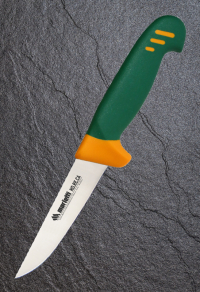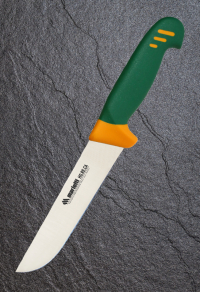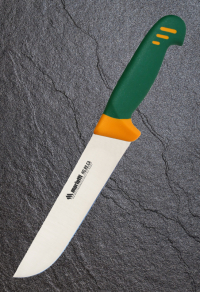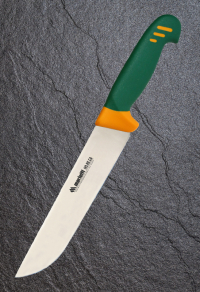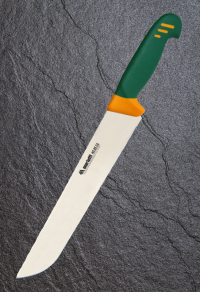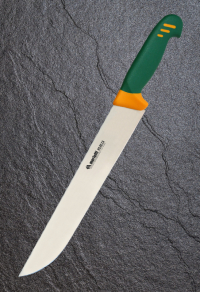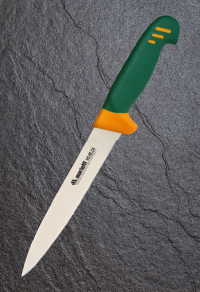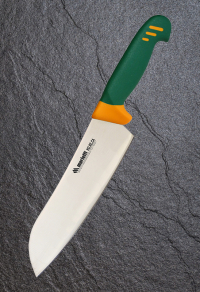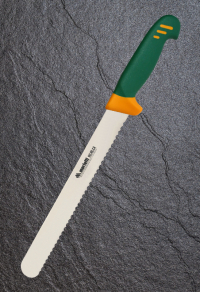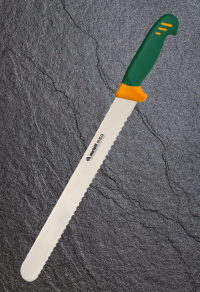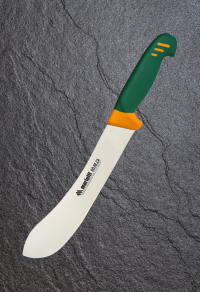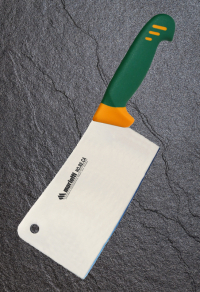
Professionale HO.RE.CA
-
Knife FRANCESE 13 BUT13
Knife with a large and heavy blade, generally having a length between 15 and 30 cm with a specific curvature - near the tip - that allows precise cuts to be obtained. Used to cut all types of red meat. -
Knife FRANCESE 16 BUT16
Knife with a large and heavy blade, generally having a length between 15 and 30 cm with a specific curvature - near the tip - that allows precise cuts to be obtained. Used to cut all types of red meat. -
Knife FRANCESE 18 BUT18
Knife with a large and heavy blade, generally having a length between 15 and 30 cm with a specific curvature - near the tip - that allows precise cuts to be obtained. Used to cut all types of red meat. -
Knife FRANCESE 21 BUT21
Knife with a large and heavy blade, generally having a length between 15 and 30 cm with a specific curvature - near the tip - that allows precise cuts to be obtained. Used to cut all types of red meat. -
Knife FRANCESE 26 BUT26
Knife with a large and heavy blade, generally having a length between 15 and 30 cm with a specific curvature - near the tip - that allows precise cuts to be obtained. Used to cut all types of red meat.
-
Knife FRANCESE 31 BUT31
Knife with a large and heavy blade, generally having a length between 15 and 30 cm with a specific curvature - near the tip - that allows precise cuts to be obtained. Used to cut all types of red meat. -
Knife FILETTARE 18 FIL18
To "fillet" a thin and very well sharpened blade is needed, better if quite flexible. While it is being withdrawn, it is really necessary to have a flexible blade and let it slide without using excessive pressure. Type of knife and relative blade dedicated almost exclusively to the preparation of fish. Think of cleaning all medium and large fish, when you intend to remove the "pulp" from the spine.
-
Knife SANTOKU 18 STK18
The Santoku knife represents the Japanese equivalent of the European chef's knife (CHEF KNIFE). Characteristic Japanese knife used to cut and chop vegetables. For this operation - in fact - Western cooks use the knife called CHEF KNIFE The big difference between the two blades is that the carving knife is designed so that the tip always remains in contact with the cutting board, while the Santoku is used as a small cleaver and the tip always comes off the cutting board.
-
Knife PANE 24 BRD24
Slicing bread precisely and serving beautiful slices is a daily action. In addition, cakes, casseroles, roulades and other savory or cheesy preparations require a precise cut without having to pressurize the food, and this blade facilitates cutting.The tip is not needed and the blade must be wavy so as to incise the crust slowly without breaking it. -
Knife PANE 31 BRD31
Slicing bread precisely and serving beautiful slices is a daily action. In addition, cakes, casseroles, roulades and other savory or cheesy preparations require a precise cut without having to pressurize the food, and this blade facilitates cutting.The tip is not needed and the blade must be wavy so as to incise the crust slowly without breaking it. -
Knife SCIMITARRA 21 SKN21
Knife used mainly in butchery for professional use. It is necessary to start cutting the pieces of meat. Its blade can reach up to 34 centimeters in length. The blade of the knife stretches to rise exponentially towards the tip, also equipped with thread and blade, thus helping the cutting operations. Used for domestic use to slice porchetta, suppressed and large pieces of meat. -
Knife FALCETTA CHP16
Butcher knives have large and heavy but also very sharp blades. They are also generally used as chippings, but they are also very useful for cutting meat slices and pieces.

